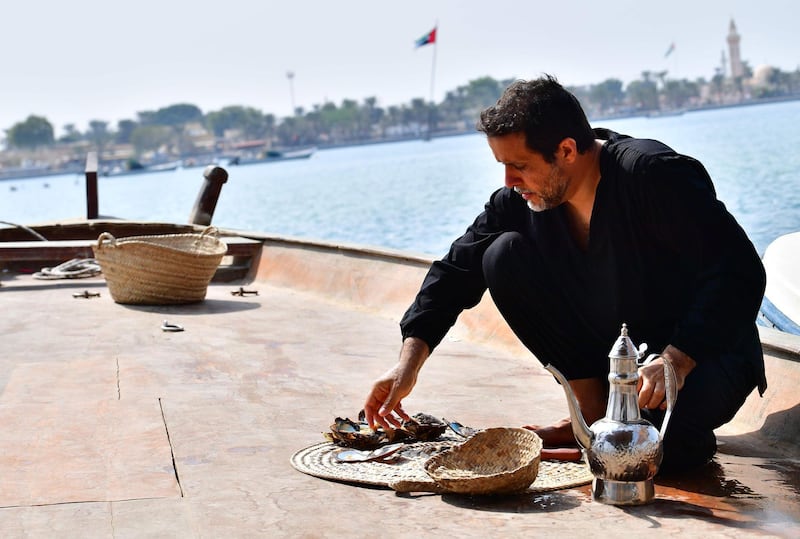Pearl diving was once the most lucrative profession in the Arabian Peninsula, but it was also one of the most dangerous, with pearl divers at risk of being killed by sharks or drowning. Their eardrums were also susceptible to damage, and the long periods of time they spent away from their families made them prone to homesickness.
Each day brought concerns over personal safety, as well as uncertainty about whether they would even find any pearls that would allow them to provide for those waiting for them at home. To ease their anxiety during their time at sea, the pearl divers sang.
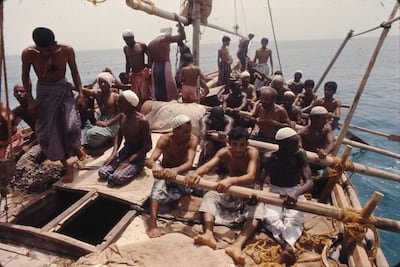
"A lot of their songs expressed sadness," Ghazi Al Mulaifi, a professor of applied ethnomusicology at NYU Abu Dhabi, says. "They were inspired by the sorrow of being away from family, or the death of a fellow diver during the trip. In a small way, the pearl divers' songs are comparable to the blues."
Every task aboard the pearl divers' ship had a song. The sailors sang, clapped and played the hand-drum as the sail was raised. There was a specific song for when the anchor was lowered and another was sung while the sailors rowed. The songs were mostly devotional and asked God for help. But once the task was completed, the divers sang lighthearted songs to preserve the morale on deck.
Al Mulaifi is working to keep this spirit of musical dialogue alive today. He is teaching an intensive three-week course on the music of the Arabian Peninsula, titled Engaging Khaleeji Musical Heritage: An Introduction to Applied Ethnomusicology. The class, which began this month, meets five times a week, three hours a day, and is divided into two daily segments: a hands-on percussion workshop and an interdisciplinary seminar.
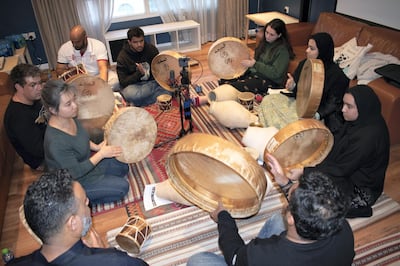
The pearl diving songs are recognised as distinctly Khaleeji, but Al Mulaifi says it is important to understand their cosmopolitan influences. "The music was born of trade," Al Mulaifi, who comes from a family of pearl divers and merchants, says. "Influences were picked up along the trade routes of the Indian Ocean. We have African imprints, Indian imprints and Iraqi as well."
Al Mulaifi says that in some circles, it is somewhat controversial to recognise these cosmopolitan influences in the music, as many people from the region prefer to champion the pearl diving songs as purely Khaleeji. But he says the dialogue between cultures was an important part of the music's history.
"It makes sense, people of the peninsula had to trade," he says. "They had nothing but pearls, they had to learn other languages and other ways of being. When you engage with other people, you engage with them not just economically and culturally but also through music. And you can hear those influences in the songs."
The rhythms of the percussion on deck were reminiscent of those from north-east Africa. The musical quality of the vocals alluded to the tunes of the Swahili coast. The tabl bahri (sea barrel drum) was imported from India. Some of the poetry sung on the ship was influenced by Iraqi work. Zuhairiyat and Mawal are poetic forms used in both Iraq and the Arabian Peninsula. Kuwait and other countries in the gulf borrowed those forms to make their own art.
It is these intricacies and little-known details that students on Al Mulaifi's course will learn.
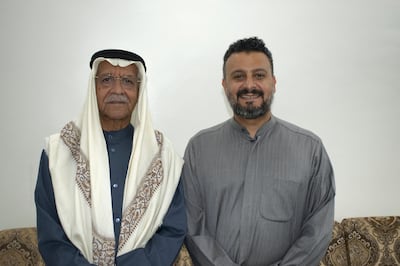
A big part of the class, Al Mulaifi says, was travelling to Kuwait to meet some of the caretakers of the tradition. "There are a number of Kuwaiti ensembles who are practising pearl diving music today. I focused on the Mayouf Mejally Folkloric Ensemble," he says.
The ensemble was the first diwaniya (or majlis) in Kuwait to open its doors to the public. Prior to that, the diwaniyas were a private affair, a place where pearl divers met to sing and express their emotions and the trauma that came with the rigours of their profession. It is now a place where the music is preserved and passed from generation to generation in a majlis-like setting.
Al Mulafi says his students sat down with the elders to hear about where the music came from and how it was being preserved. "We learnt how to play the music, how to get the right sounds from the percussive instruments," Sara Al Marzooqi, one of Al Mulaifi's students, says.
Along with other students, she interviewed a few of the elders, taking voice recordings and video, all of which will be posted on a website launched at the end of the project. "They told us that it was their duty to teach people about our history," Al Marzooqi says. "We asked them what they thought about modern Khaleeji music and they said it was very different. They said they don't necessarily have to keep up with the times and even if not everyone was listening to their music, they should keep it alive, to show it existed."
Students are set to perform with members of the ensemble at NYUAD on Thursday. Workshops with ensemble members will be held before the event, to hone the student's percussion skills. Al Marzooqi says there is also a Khaleeji music interest group in the making, called DumTak. The name is derived from the low and high pitches of the frame drum.
Al Mulaifi is also part of his own ensemble, Boom.Diwan, which comprises himself and members of the Mayouf Mejally Folkloric Ensemble. The group has toured the region and are set to record an album in Los Angeles this summer with six time Grammy-award winning jazz musician Arturo O'Farrill. Boom.Diwan performed with O'Farrill's Afro Latin Jazz Orchestra in February last year. The event was called the Cuban-Khaleeji Project and was held at NYUAD.
The meeting between the members of the Mayouf Mejally Folkloric Ensemble and the Afrocuban musicians in O'Farrill's orchestra was a modern example of the dialogue that shaped the pearl divers' songs. "They felt they shared a lot of the same repertoire – they couldn't speak the same language but a lot of the rhythms and musical language were familiar," Al Mulaifi says.
The link between the two cultures was most likely Andalusia, he says. "Arturo is interested in the links between Afro-Cuban and the Afro-Khaleeji music. If you look at Cuba and its music, the Islamic influence on Spain and the slave trade both had reaches to Africa and the Arabian Peninsula."
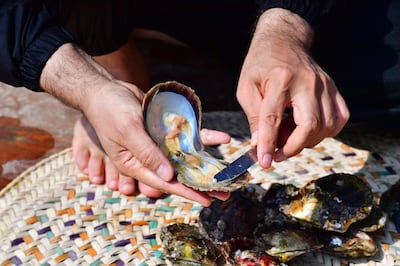
Al Mulaifi says he hopes the Engaging Khaleeji Musical Heritage course will act as a springboard to creating a space to develop and preserve Khaleeji music at NYUAD, but more importantly, to keep the tradition of dialogue alive. He hopes the course will become a more permanent fixture on the academic calendar.
"I want to reinvigorate the spirit of dialogue, of cosmopolitanism and exchange," he says. "What we're doing is part of that legacy of openness, so that whoever is interested can come here and learn. That's our mission, to create a Khaleeji musical presence on campus that can have a voice here locally and reach out globally."
